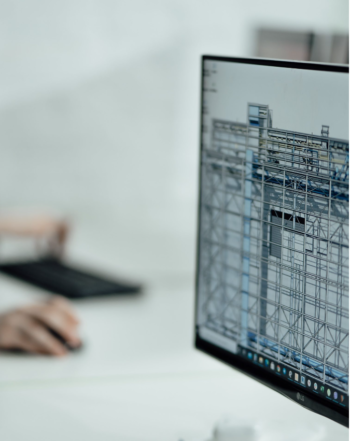Unlocking digital twins
Competition: Breakthrough 2: Catalyst
Amount awarded: £334,800
Led by: Thames Water
Partners: Severn Trent, National Digital Twin Programme
Project Completion date: September 2024
Water cycle tag: Enabling activities
See project updates on the Thames Water website.
This project, “Unlocking Digital Twins,” was funded by Ofwat’s innovation program to explore new ways of managing water networks and encourage collaboration across the water industry. It specifically aimed to challenge barriers-of-entry for pioneering solution-architects, and test innovative approaches to essential water utility tasks. This is a stepping stone towards democratisation of innovation, which enables transparency and scalability of solutions, and ultimately benefits the consumer.
Why This Project Was Needed
Across the water sector, different companies often work on similar challenges independently, leading to duplicated efforts and slower progress. This project was crucial because it addressed several key issues:
- Faster Solutions: By working together, water companies can avoid “reinventing the wheel” and share learnings, to accelerate industry solutions.
- Lower Costs for Everyone: When solutions are designed to work across different companies, it reduces the need for each company to develop its own expensive, custom tools.
- Breaking Down Silos: A lack of common standards can make it hard for different companies, or even different teams within the same company, to share data and innovations. This project aimed to create common ground and demonstrate the feasibility of shared ontologies (structures of the data).
What We Achieved
The “Unlocking Digital Twins” project successfully developed a new open-source software toolkit designed to create digital models of water distribution networks. Here’s what it accomplished:
- Teamwork for a Shared Goal: We brought together Thames Water, Severn Trent Water, and Sand Technologies to work collaboratively. This partnership showed how valuable shared knowledge and resources can be in driving innovation, especially in overcoming challenges related to data.
- Easy Data Translation: We created “recipes” – essentially, automated methods – to convert existing water company data into a standard digital format. This means that data from different companies can now “speak the same language,” making it easier to share and use.
- New Ways to See Water Networks: The project explored and demonstrated how to use advanced “graph-based” technology to visualise and analyse water networks. This offers a powerful new way to understand complex connections within the system.
- Open for Everyone: A core outcome of this project is that the software toolkit and its methods are freely available to the public on a platform like GitHub. This open-source approach encourages other water companies and innovators to use, adapt, and contribute to the technology, promoting widespread adoption and further innovation across the sector.
- Getting started: Water data is sensitive data, and this means that building solutions to critical problems is impossible, unless you work directly, or consult, for a Water Utility. For the purposes of UDT, we have built a synthetic data generator that lets users build a fictional water network to test the toolkit without needing real-world input.
Lessons Learned and Moving Forward
While the project was a success, we learned important lessons, particularly regarding data access and collaboration. Delays in getting data due to internal policies and regulatory requirements highlighted the need for proactive planning and flexible approaches.
This project has laid the groundwork for future advancements. By making our tools open and demonstrating the power of collaboration, we believe this work will help the water industry become more efficient, resilient, and better equipped to serve customers and protect the environment in the long term. Continued engagement and support from industry stakeholders will be key to seeing this technology adopted more widely.
Resources:
For more information on Unlocking Digital Twins Development of a Water Distribution System Model, take a look at the following resources:
The “Unlocking Digital Twins” project successfully developed a new open-source software toolkit (click here to access the repo) – designed to create digital models of water distribution networks. The live link, is here: https://github.com/Sand-EnterpriseAI/udt-clean-water-toolkit


